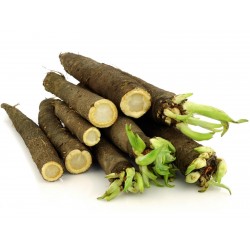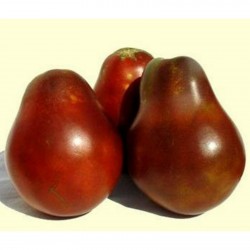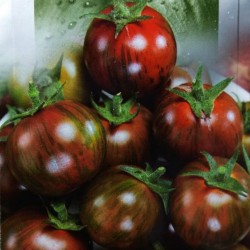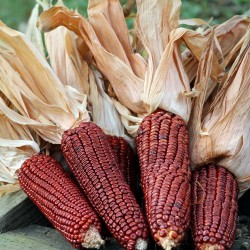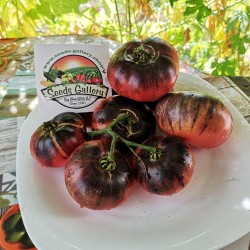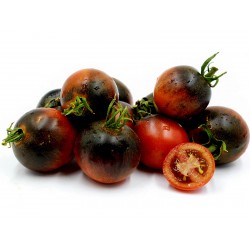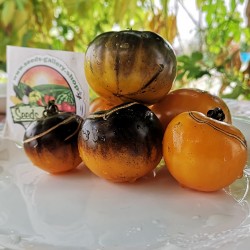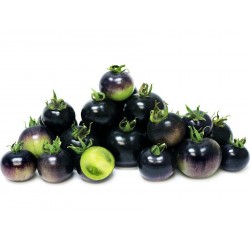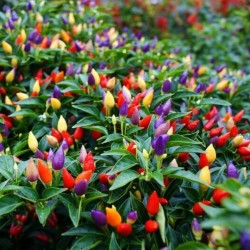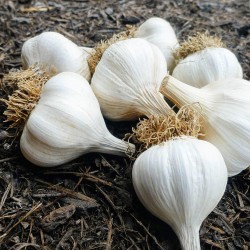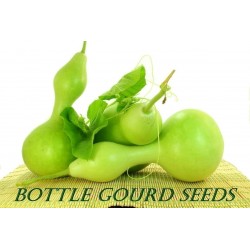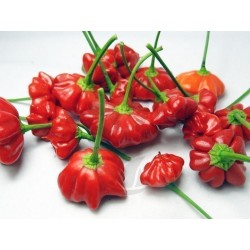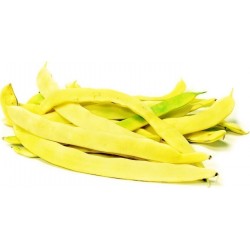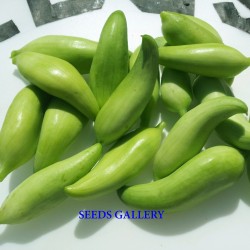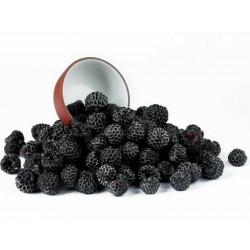
Black Raspberry Seeds...
Price
€2.25
(SKU: V 144 B)
Seeds Gallery EU,
5/
5
<h2><strong>Black Raspberry Seeds (Rubus occidentalis)</strong></h2>
<h2><span style="color: #f80000;" class=""><strong>Price for Package of 40 (0,1g) seeds.</strong></span></h2>
<p>Rubus occidentalis is a species of Rubus native to eastern North America. Its common name black raspberry is shared with the closely related western American species Rubus leucodermis. Other names occasionally used include wild black raspberry, black caps, black cap raspberry, thimbleberry, and scotch cap.</p>
<p>Rubus occidentalis is a deciduous shrub growing to 2–3 m (7–10 feet) tall, with prickly shoots. The leaves are pinnate, with five leaflets on leaves, strong-growing stems in their first year, and three leaflets on leaves on flowering branchlets. The flowers are distinct in having long, slender sepals 6–8 mm long, more than twice as long as the petals. The round-shaped fruit is a 12–15 mm diameter aggregation of drupelets; it is edible, and has a high content of anthocyanins and ellagic acid.</p>
<p>Black raspberries are high in anthocyanins. This has led to their being very useful as natural dyes. Preliminary studies to evaluate their benefit for cancer treatment in mammalian test systems are ongoing[7] and a small-scale clinical trial has begun on patients with Barrett's esophagus.</p>
<p>The black raspberry is also closely related to the red raspberries Rubus idaeus and Rubus strigosus, sharing the distinctively white underside of the leaves and fruit that readily detaches from the carpel, but differing in the ripe fruit being black, and in the stems being more prickly. The black fruit makes them look like blackberries, though this is only superficial, with the taste being unique and not like either the red raspberry or the blackberry.</p>
<p>As suggested by the common name, black raspberries usually have very dark purple-black fruits, rich in anthocyanin pigments. However, due to occasional mutations in the genes controlling anthocyanin production, yellow-fruited variants ("yellow raspberries") sometimes occur, and have been occasionally propagated, especially in home/farm gardens in the midwestern United States (e.g., Ohio). The yellow-fruited variants of the black raspberry retain that species' distinctive flavor, different from the similar-appearing pale-fruited variants of cultivated red raspberries (generally the Eurasian Rubus idaeus, but with some being the North American Rubus strigosus, and other cultivars representing hybrids between these two widespread species).</p>
<p><strong>Commercial growing and processing</strong></p>
<p>The center for black raspberry production is in the Willamette Valley in Oregon. The main cultivar, 'Munger', is grown on about 600 ha (1500 acres). Other cultivars include 'John Robertson', 'Allen', 'Jewel', 'Blackhawk', 'Macblack', 'Plum Farmer', 'Dundee', 'Hanover', and 'Huron'. The plants are summer tipped by hand, mechanically pruned in winter and then machine harvested. The yields are generally low per acre and this is why the fruits are often expensive.</p>
<p>The species has been used in the breeding of many Rubus hybrids; those between red and black raspberries are common under the name purple raspberries; 'Brandywine', 'Royalty', and 'Estate' are examples of purple raspberry cultivars. Wild purple raspberries have also been found in various places in northeastern North America where the two parental species co-occur and occasionally hybridize naturally.</p>
<p>The berries are typically dried or frozen, made into purées and juices, or processed as colorants. Fresh berries are also marketed in season. Two well-known liqueurs based predominantly on black raspberry fruit include France's Chambord Liqueur Royale de France and South Korea's various kinds of Bokbunja (see Korean alcoholic beverages).</p>
<p> </p><script src="//cdn.public.n1ed.com/G3OMDFLT/widgets.js"></script>
V 144 B (0.1g)


